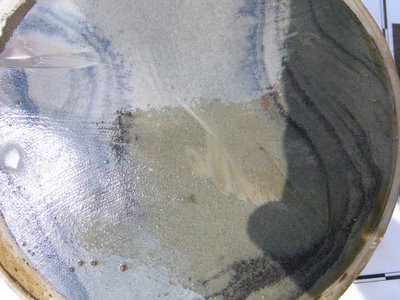
George wants to see some core coming out of the ground. Well, no names, no pack-drill, but here's a few pix from a recent coring job. (When I've finished unpacking them and cutting off the identifying marks.)
Coring is a pretty uncommon activity these days - the only time it's really necessary is to get undamaged samples of a reservoir for porosity/ permeability measurement, and even then the results are somewhat suspect because the core is typically flushed through with liquid filtrate from the drilling mud, and that can damage the porosity of the rock sample.
An interesting job I was on a few years ago was where the client wanted to compare the vertical and horizontal permeability of the reservoir. Here, even if there were porosity damage, it shouldn't differentially affect the vertical versus horizontal properties. Has that file finished extracting yet? Nope.
Half an hour later ... well actually the photos I took on that coring job were much more boring than I'd remembered. Only one worth bothering with really, and none of the actual coring operation (unless you want photos documenting that the core barrels had sub-standard orientation markings - didn't think so).
The photo is of the cut end of a section of core, which I photographed in the driving rain of a wet and mosquito-ridden evening. The blade used to cut the core has cut more-or less straight and planar, so the wiggling of the fine beds of dark material indicates that there is irregular bedding here. In the NE of the image you can see that one of the beds is thinning quite substantially over a small distance. (You can also see most of a centimeter scale bar). The saw nick in the NW of the image is where we broke off a chip for microscopic examination.
Then we wire-clipped a cap onto the end of the fibre-glass barrel, nailed it onto a box with it's neighbours, and packed it onto the back of a truck to go to the core analysis lab, never to be seen again (at least, not by me).

